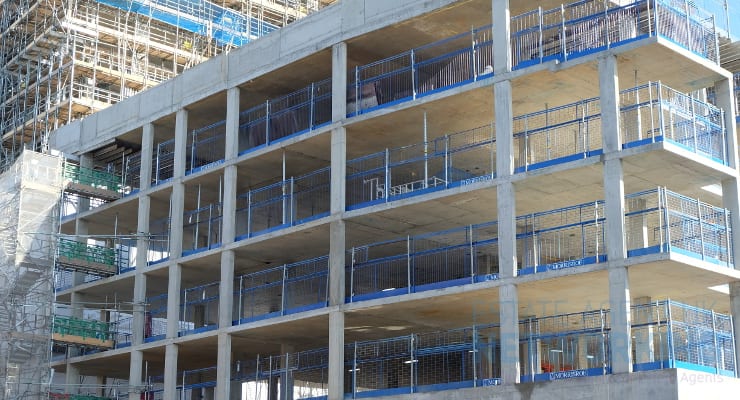3 Ways to Maximize Efficiency During a Construction Project
Managing a construction project requires serious juggling. You’re handling dangerous machinery, delegating jobs to multiple (sometimes dozens) of workers, and making sure everything you do fits into the approved budget.
It’s not a job for someone who can’t work under pressure, but you do it well. Still, there’s always room to grow, and with the rising cost of labor and supplies, you need to maximize efficiency today more than ever.
Some things, like unexpected delays, can’t be controlled. Yet, if you follow these tips, you’ll be able to maximize efficiency and reap the benefits of higher quality work, cost savings, and on-deadline or before delivery in your construction projects.
1. Plan Thoroughly
No matter how long you’ve been in the construction industry, each project is unique. It has its challenges and streamlined aspects, and you may not know what they are until you take a deep dive into the plans.
This phase is often referred to as preconstruction and can be just as essential as the building process. Here, you’ll focus on factors like:
- Setting clear objectives. Yes, your final goal is a finished structure, but how will you get there? Determine the milestones that will be completed along the way, address budget constraints, and set a tentative timeline.
- Defining each step of the plan. What do the milestones you’ve established look like? Who is responsible for completing them? How much of the budget will they require? How long will they take? This section is crucial, as you’ll develop the action steps and resources necessary for the project’s success before any work begins.
- Determining risk. Safety is always first. In this step, you’ll evaluate the milestones and pinpoint potential risks. Once you know where your red flags are, you can offer ways to make those aspects safer and create a backup plan to work around them if necessary.
- Communicating with key stakeholders. Before you start working, everyone must be on board with the final plan. Otherwise, expensive resources can be wasted if one of the stakeholders disapproves of the process.
These planning steps will eliminate many of the challenges involved in construction, simplifying the project and improving your chances of delivering the work successfully, timely, and on budget.
2. Embrace Technology
Whether you’re comfortable with technology or not, it’s a cost-effective, time-saving part of the construction industry. As the leader of complex, complicated, and expensive projects, part of your role is to find ways to make the work easier and budget-friendly. Technology can make this happen for you.
Project management software includes everything you need to streamline invoices, supply costs, labor hours, templates, and more. The right software can eliminate hours of repetitive administrative tasks. It’s also ideal for communication, letting your team access instructions and collaborate in real-time through cloud-based storage.
BIM, or building information modeling, is another way technology has made construction work simpler. With BIM, the project designer creates a digital image of a building, similar to paper blueprints. However, with BIM, the computer uses intelligent 3D modeling that interprets the design’s physical and functional data. Teams can collaborate and manage the structure, changing its characteristics as necessary. Importantly, BIM software interprets the data and can warn you when something conflicts, reducing potential risks and saving money.
Site surveys, safety checks, and progress updates are part of every construction project’s timeline. In the past, this meant time-consuming visits to the site, but with drones and artificial intelligence software, you can see what’s going on instantly, at any time, and from anywhere. Learning to use this technology confidently can be a game-changer in your construction process.
3. Shop Around For Your Resources
Maybe you’ve always used ABC Company for your supplies, and you’re loyal to them. This loyalty is great, but only if you know that they are continually updating their policies and prices to include the best available. Otherwise, it’s time to shop around and talk to the experts.
The material you use doesn’t just matter for the budget. You want to ensure your supplies are eco-friendly and reduce waste when possible. Limiting yourself to a handful of companies also means if there’s a delay, your project runs late.
Get to know experts who can offer alternative suggestions for the same (or better) results. For example, instead of site-cast cement, the job may be able to use cast-in-place concrete, which can save time and be more effective. this guide by FMP Construction explains the benefits of cast-in-place concrete and when it’s best to use it instead of other options.
Shopping around for your resources includes looking for skilled labor and highly trained workers. Cheaper work isn’t always more efficient. Skilled workers can get more done faster and, importantly, safer. Your employees represent your company. Look for the best you can afford, and add cushion to your budget to keep your team satisfied. You’ll see a high return on your investment when you have hardworking, loyal labor.
Conclusion
Maximizing efficiency during your construction project starts with the preconstruction work. Plan thoroughly, and you’ll reduce the chance of delays, safety issues, and budget overages. Get comfortable with technology, incorporate it into your daily routines, and shop around for the best, most cost-efficient resources. These three tips will give you the optimal chance of a successful finished project, delivered on time and within budget.









